◆ Hirschsprung Disease
Hirschsprung disease is primarily due to mutations in the RET proto-oncogene and endothelin receptor B genes with failure of normal ganglion precursor cell migration to the rectum and distal colon. In most cases a segment of the distal colon is unable to relax causing a functional distal colonic obstruction. In severe cases, more proximal and even complete colonic agangliosis may occur.
Hirschsprung disease is usually diagnosed in full-term neonates who fail to pass meconium in the first 48 hours following birth, is more common in males, and is only rarely seen in premature infants. Other neonatal presentation include enterocolitis and rarely sigmoid volvulus. Older children and adults present with chronic constipation.
Although often an isolated abnormality, Hirschsprung disease can be associated with Down syndrome, multiple endocrine neoplasia type II, and several other genetic syndromes.
Abdominal radiographs in the neonate show multiple dilated loops of large and small intestine with air-fluid levels. The affected colonic segment is typically small in caliber, and located at the rectosigmoid junction, with normal or distended colon proximal to the transition. No gas or stool is seen in the rectum. Contrast enema may be helpful in diagnosis and evaluation of length of involvement, and imaging findings include a transition zone, abnormal or irregular contractions of the aganglionic segment, thickening or nodularity of the colonic mucosa, and delayed evacuation of contrast material. While a transition zone suggests Hirschsprung disease, its absence does not rule out the diagnosis.
Diagnosis is made by barium enema and rectal biopsy. Treatment consists of removal of the nonfunctional, aganglionic bowel, and creation of an anastomosis from the proximal, unaffected colon to the distal rectum.
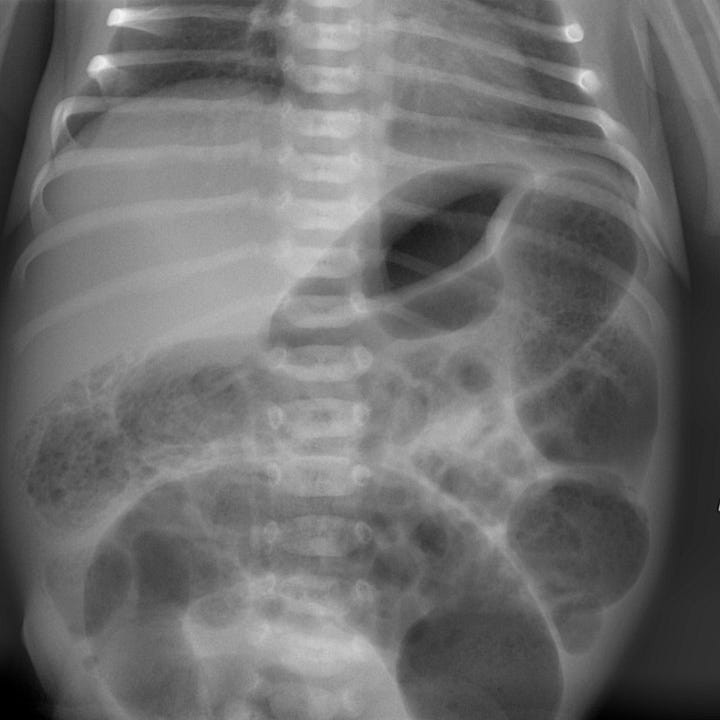
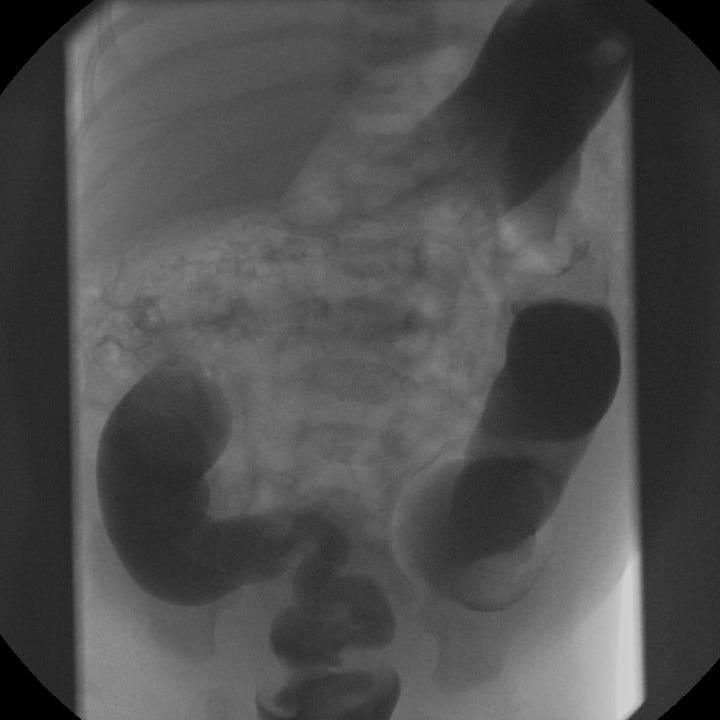
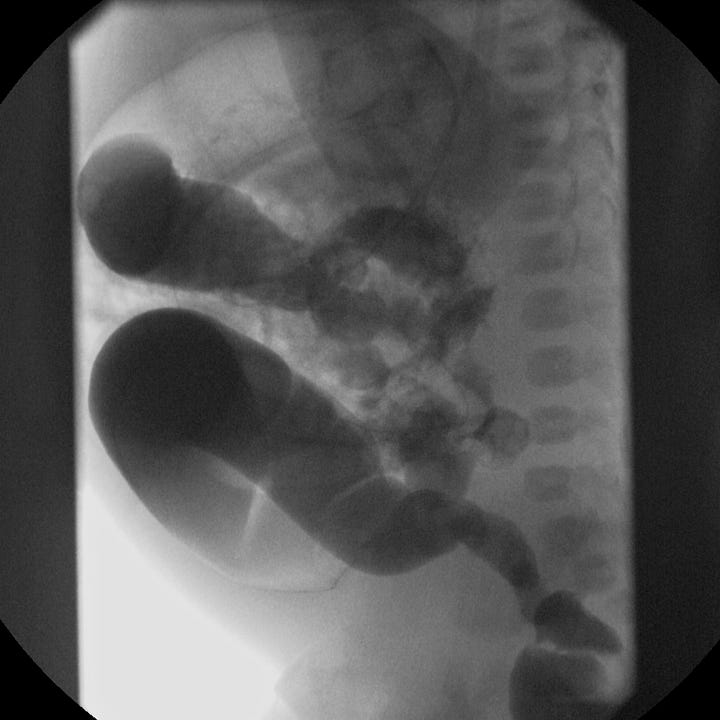
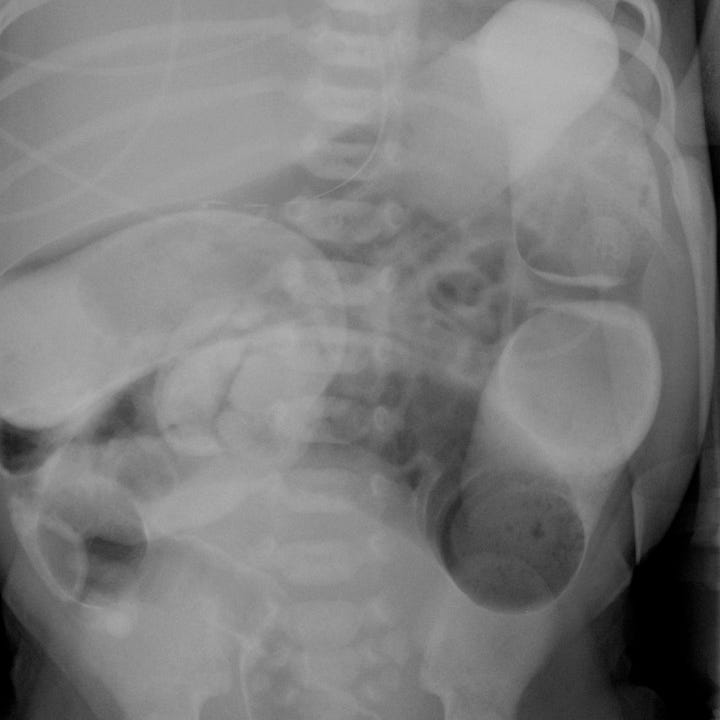
Hirschsprung disease in a newborn. The radiograph shows distended bowel with mottled contents. Contrast enema and subsequent radiograph demonstrate narrowed rectosigmoid and severe proximal colonic dilatation.
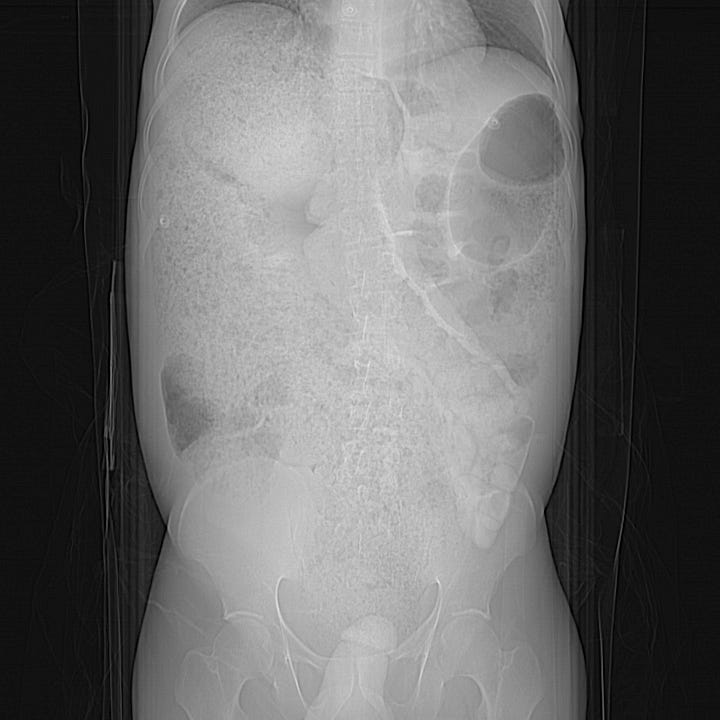
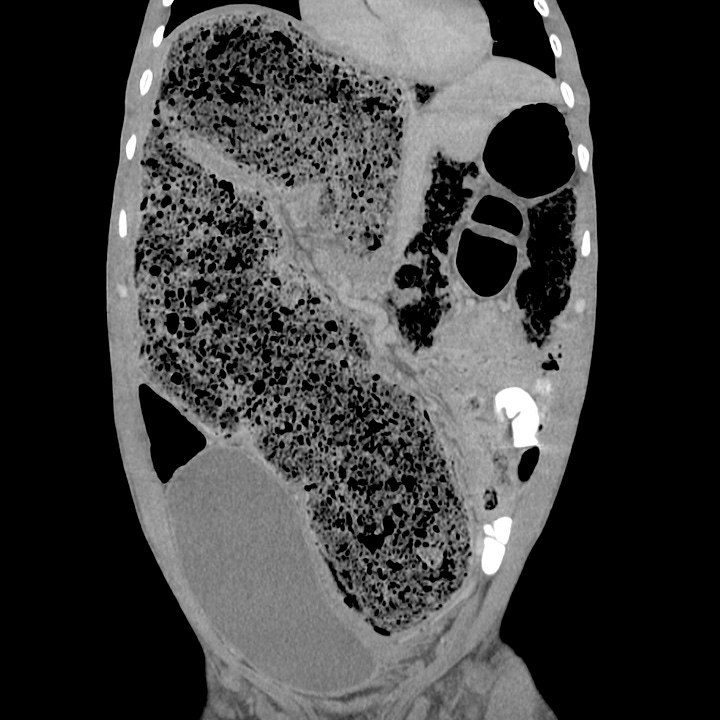
Adult with Hirschsprung disease. Massively dilated, stool-filled colon.



